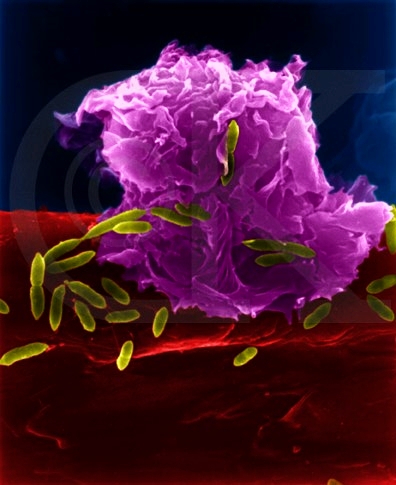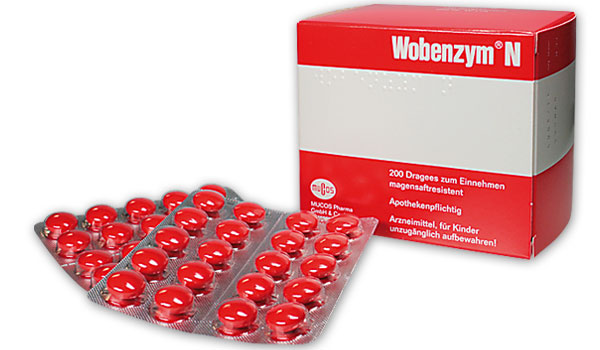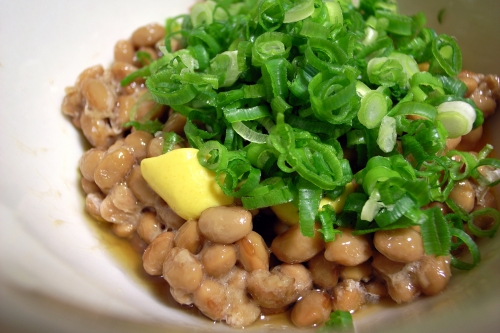More About Enzymes: Systemic Enzymes for Health.
In Monday’s post, we talked about the widely-publicized recent research that identified how some cancers use an enzyme to prepare a remote site for new tumor growth. Enzymes are also a rapidly-growing category of nutritional supplement. Digestive enzymes are the most popular types, but systemic enzymes are gaining acceptance too. Systemic enzymes are used for all kinds of health issues from chronic sinusitis to back pain and sports injuries. Find out more about systemic enzymes in today’s AllStarHealth blog.
Let’s tackle the Big One first. Easily the most popular type of systemic enzyme supplement is a unique product called Wobenzym-N (“WOE-ben-zyme”). Wobenzym-N is a blend of both plant and animal-source enzymes, and include some of the enzymes commonly used in digestive enzyme supplements like bromelain and papain. But Wobenzym is quite different from digestive enzymes both in terms of how it’s made and how it’s used. That also accounts for its much higher cost relative to digestive enzymes.
Most of the enzymes in Wobenzym are proteolytic enzymes, meaning they are able to break down proteins under the right conditions. That’s the key to how Wobenzym works.
Unlike digestive enzymes, Wobenzym is intended to be taken on an empty stomach. This ensures that its enzymes won’t be squandered on the process of digestion. When these proteolytic enzymes are taken in the absence of food, the body is able to absorb them intact and utilize them systemically.
How would proteolytic enzymes benefit the body? Most types of injuries or tissue damage – whether repetitive motion injuries, sports injuries, traumatic injuries or surgeries – generate substantial amounts of debris at the cellular level. This debris is literally “in the way” and slows the healing process while prolonging inflammation and pain.
Just as trash and debris are generated by traffic accidents or construction projects, injuries to body tissues also create a lot of debris from broken cells and other structures. Much of this debris consists of protein, and in response to the damage and the presence of this protein debris, your body will initiate and maintain the process of inflammation as long as is necessary to carry out and complete the cleanup and repair operations.
Inflammation, with its characteristic signs of redness, pain, swelling and sometimes loss of function, is uncomfortable for us to experience, but serves an important purpose because it sets up the conditions necessary to repair bodily tissues. Although we may only notice the pain and discomfort of inflammation, there’s actually quite a lot that’s happening at the cellular and tissue levels as the body attempts to clean up and repair the site of injury. Inflammation increases the blood flow to the damaged area, ferrying in raw materials and helping remove some wastes. Blood and lymph also help to transport macrophage cells to the damaged area. Macrophages are able to ingest and remove protein debris, but this is a slow and limited process, which partly accounts for why some extensive injuries take a long time to heal.

A macrophage ingesting bacteria.
Just as on any construction site, a good deal of resources must be devoted to continually removing the trash and debris, or it quickly accumulates to the point where the repairs must slow down or stop.
As long as the debris is present, it acts as a signal to maintain the state of inflammation, and as long as that state exists, you’re going to experience pain and loss of function.
When taken on an empty stomach (1 hour before or 3 hours after eating), your body can absorb the proteolytic enzymes in Wobenzym intact and once they’re circulating in the bloodstream they can speed the breakdown and removal of protein debris at the site of injury or tissue damage. This clears the way for repair processes to continue unimpaired and reduces the stimulus to prolong the state of inflammation.
This is the key to understanding how Wobenzym-N works to accelerate healing and reduce pain and inflammation. It’s also a point of distinction between Wobenzym and anti-inflammatory medications like aspirin or ibuprofen, which actually slow healing by interfering with inflammatory mechanisms themselves instead of acting upon the root cause of the inflammation.
In general, enzymes are fairly fragile and unstable chemicals that are easily degraded by heat or exposure to pH extremes of acidity or alkalinity. That presents a challenge to enzyme supplement manufacturers because even the best tableting and encapsulating techniques create a lot of heat. With digestive enzymes, that doesn’t compromise their effectiveness very much, but with systemic enzymes, it does.
The German pharmaceutical firm Mucos Pharma makes Wobenzym tablets through an elaborate and proprietary, temperature-controlled process that builds up the tablets in multiple small layers so that the large and fragile enzyme molecules retain their intact structure. This process is time-and-resource intensive and accounts for the high cost of Wobenzym tablets. But no other company has thus far been able to duplicate the effectiveness of Wobenzym tablets, although there are many competing products that have nearly identical ingredient labels. In this case, how the product is made is more important that its ingredients and so at this point in time there’s really no substitute for Wobenzym. You can use Wobenzym to lessen pain and speed resolution of almost any kind of injury, acute or chronic, surgeries, dental work or even minor bumps and bruises. The key is being disciplined enough to take it empty stomach and in the substantial dose it requires: 3-6 tablets at a time, 1-3 times per day. Fortunately, Wobenzym tablets are small and easy-to-swallow, about the size of M&M candies.

Silkworms produce serrapeptase enzyme to digest their cocoon.
Serrapeptase, which was introduced to the supplement market fairly recently, is another type of systemic enzyme that might be one of the few legitimate alternatives to Wobenzym. It’s a proteolytic enzyme derived from silkworms, and is able to break down a wide range of cellular debris, including blood clots and arterial plaque. It’s used in much the same way as Wobenzym for injuries and healing, but also experimentally to help reduce the amount and formation of arterial plaques and unhealthy blood clots that could lead to heart attacks and strokes.
Nattokinase is another systemic enzyme derived from the fermented soy food natto. Nattokinase is able to dissolve fibrin, a protein that thickens blood and forms the basis of blood clots. By speeding the clearance of fibrin and ‘thinning’ the blood in a different and healthier way than aspirin or blood-thinning drugs, nattokinase is used to improve circulation and possibly reduce the risks of stroke or heart attack.
The proteolytic enzyme bromelain, derived from pineapple stems, is often formulated with the bioflavanoid quercetin. Bromelain-quercetin combinations are able to inhibit the release of histamines from mast cells found in connective tissues. Histamines cause tissues to swell, and account for the congestion associated with colds and sinus problems. Why not use antihistamine drugs? Anti-histamine drugs affect histamine receptors, and because of that, have well-established side-effects such as drowsiness. But bromelain-quercetin combinations don’t work through the histamine receptors and therefore don’t cause those side-effects. Their most significant side-effect of bromelain-quercetin is sexual in nature. Because histamines are essential to arousal and orgasm, some users may experience diminished sexual responsiveness when using bromelain-quercetin supplements.
Have you used enzyme supplements? What was your experience? We’d love to hear your feedback, please send it to mtaylor@allstarhealth.com.





